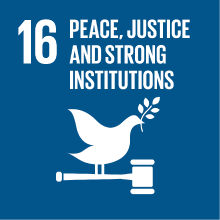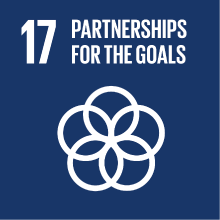HISTORY OF BUDDHISM
- Academic year
- 2021/2022 Syllabus of previous years
- Official course title
- STORIA DEL BUDDHISMO
- Course code
- LT2950 (AF:347910 AR:186280)
- Teaching language
- Italian
- Modality
- On campus classes
- ECTS credits
- 6
- Degree level
- Bachelor's Degree Programme
- Academic Discipline
- L-OR/20
- Period
- 2nd Semester
- Course year
- 1
- Where
- VENEZIA
- Moodle
- Go to Moodle page
Contribution of the course to the overall degree programme goals
By the end of this course a typical student should be able to do most of the following:
Locate the origins of Buddhism of South-East Asia in its socio-religious context;
• Outline the spread of Buddhism in South-East Asia;
• Explain the fundamental concepts of Buddhism and relate these to the practices;
• Describe its main scriptural authorities;
• Identify a range of motivations underlying ordination and the relation between monasteries and Buddhist societies;
• Discuss some of the above with reference to relevant primary and secondary sources.
The course is an elective for the BA in Languages, Cultures and Societies of Asia and North Africa.
Expected learning outcomes
1. Have gained a good knowledge and critical understanding of the main topics concerning the cultural history of early Buddhism in South-East Asia;
2. Have gained an understanding of the continuities and discontinuities between the main schools of early Buddhism;
3. Be able to find and use critically a range of materials including books, journals, primary sources, and web-based resources relevant to the topics studied in the course.
4. Write a sustained argumentative essay on the basis of their study of the bibliography of the course.
Pre-requirements
Contents
1) Geography and general chronology ; The maritime circuits (case study Oc Eo, Vietnam)
2) How to read Buddhist art (see LT2950 South Asia Module)
3) The Early Classic phase of Myanmar: case study 1. Sri Ksetra; case study 2. case study Thatön
4) Case Study: Borobudur
5) Authenticity and Heritage: the Buddhist cultural patrimony.
Seminars (in English, with N. Revire)
6) Facts and Fiction on the Advent of Buddhism in the “Golden Land”
7) Dvāravatī Art and Culture: Between Tradition and Innovation
8) Origins and Spread of Bhadrāsana Buddhas
9) The Cult of the Past and Future Buddhas in Southeast Asia
10) The Life of the Buddha at Angkor
Seminars by J. T. McDaniel
11) Architects of Buddhist Leisure case 1: Kenzo Tange's Lumbini Park
12) Architects of Buddhist Leisure case 2: Ecumenical Parks and Cosmological Gardens
13) Architects of Buddhist Leisure case 3: Shi Fa Zhao and the Buddhist Museums
14) Modern Buddhist architecture in Asia .1
15) Modern Buddhist architecture in Asia .2
Referral texts
H.P. Ray, The emergence of urban centres in Bengal: implications for the late prehistory of south east Asia (PDF on Moodle)
H. Bechert, Buddhismo Enciclopedia Treccani delle scienze sociali
M. Spagnoli, Asia sud-orientale: Arte, Enciclopedia Treccani Arte antica
J. Irwin, C. Lo Muzio, Lo stupa, Enciclopedia Treccani Arte antica
J. Miksic and G.G. Yian, Ancient South East Asia (capitoli scelti). Routledge 2017
J. Guy, Lost Kingdoms: Hindu-Buddhist Sculpture of Early Southeast Asia. The Metropolitan Museum of Art 2014 (PDF on Moodle)
J. Stargardt, The Great Silver Reliquary from Sri Ksetra: Early Buddhist Art Meets Early Pali Inscriptions in the Pyu Culture of Burma (Myanmar) Relics and Relic Worshipin Early Buddhism: India, Afghanistan, Sri Lanka and Burma. Edited by Janice Stargardt and Michael Willis (The British Museum) London 2018 (PDF on Moodle)
Handouts on sites, architecture and monuments will be available on Moodle.
A selection of texts and epigraphic material will be available on Moodle.
A further reading: L.M. Olivieri, Fabrica gandharica. Lo stupa buddhista di Saidu Sharif I (Swat): le cave, il cantiere, l’officina (English edition [Serie Marco Polo, Edizioni Ca' Foscari] will be available in January 2022)
J.T. Mcdaniel, Architects of Buddhist Leisure, University of Hawai'i Press 2017.
Assessment methods
Before the exam, the candidate will present a short (about 3000 words) research essay on a topic selected by the candidate that references and cites the texts we have studied.
Type of exam
Teaching methods
Further information
2030 Agenda for Sustainable Development Goals
This subject deals with topics related to the macro-area "International cooperation" and contributes to the achievement of one or more goals of U. N. Agenda for Sustainable Development


